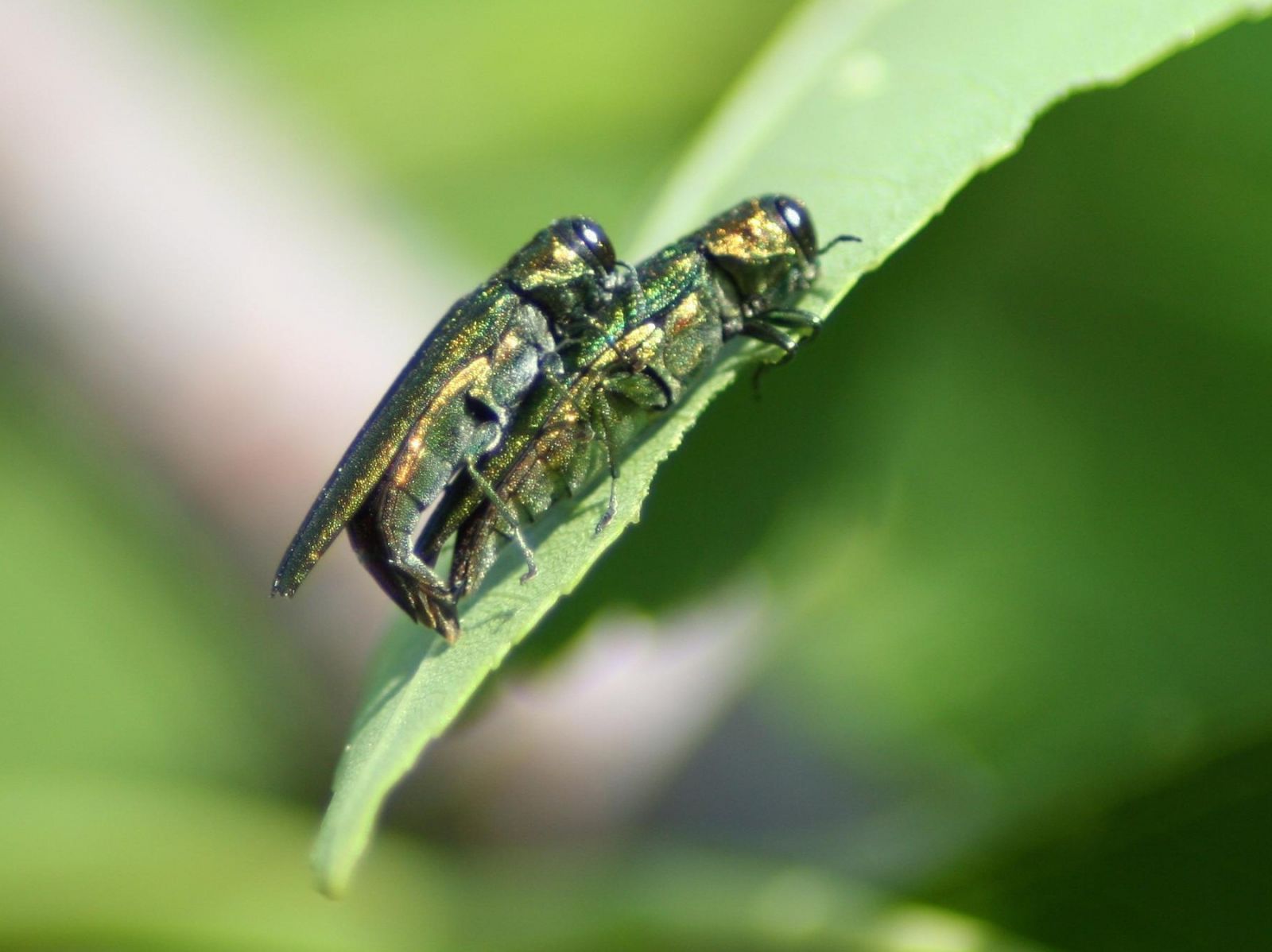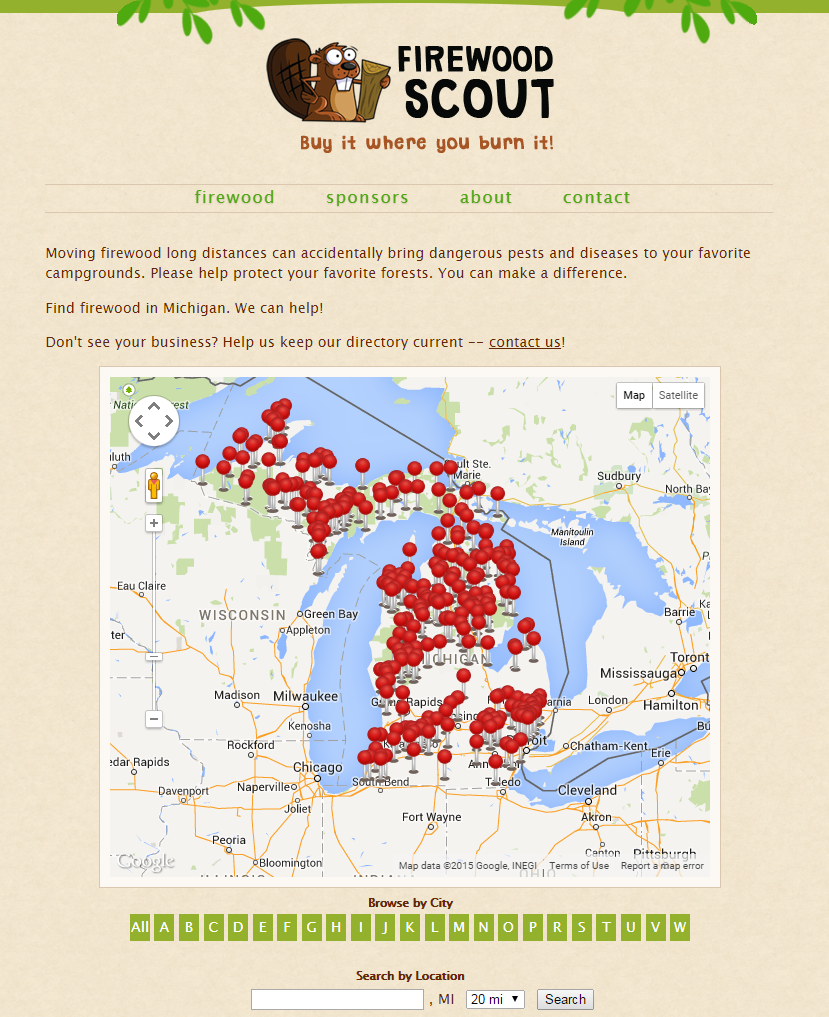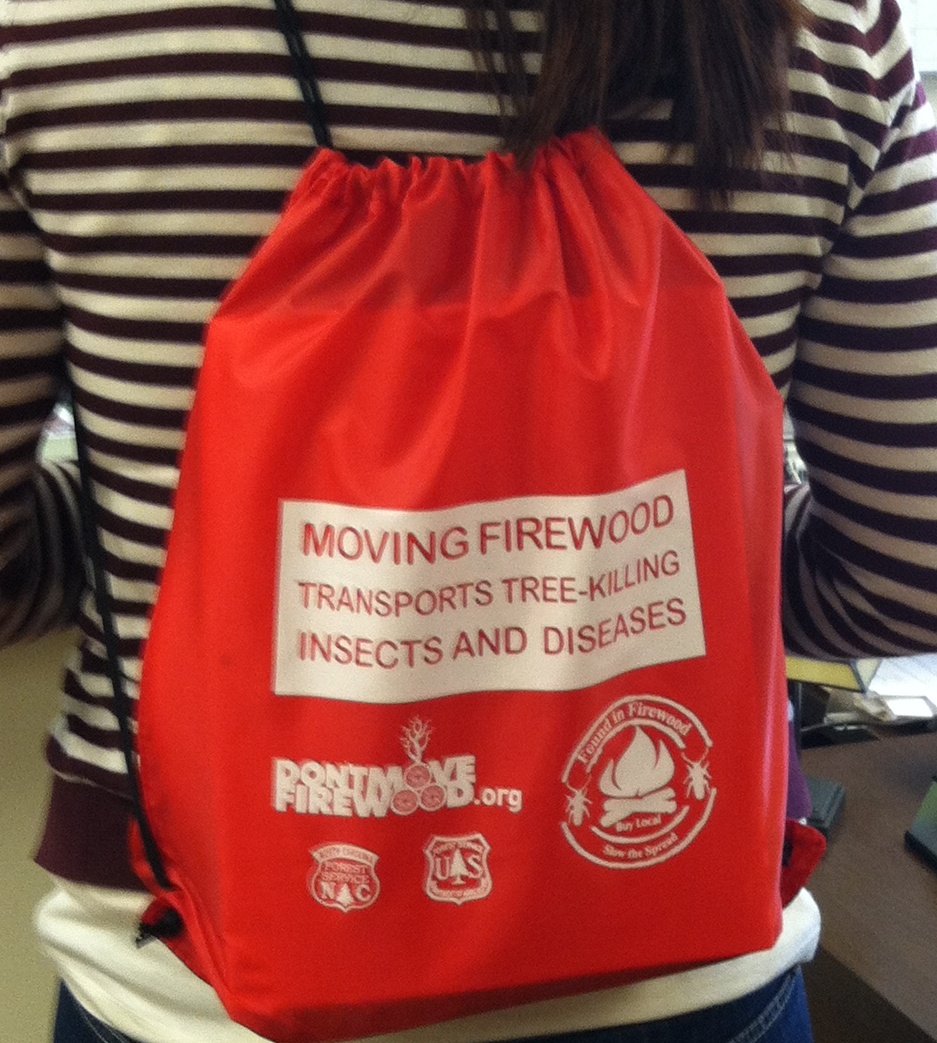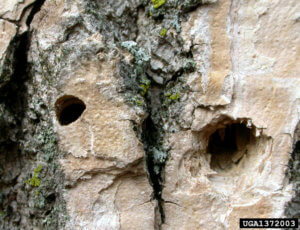Editors note: Don’t Move Firewood is thrilled to have scored this first-ever exclusive interview with an invasive forest pest, the emerald ash borer.
Q. Thanks for granting us this interview- I know you are really busy this time of year.
A. You’re welcome. Spring is my favorite season- I spend a lot of time on personal growth, and sometimes I get in a little traveling if I can. You know, camping trips, baseball…
Q. Personal growth? Tell us more about that.
A. My life – it’s like a cycle, really – revolves around the seasons. By spring I’ve grown into a full sized larvae, ready to transition from within my ash tree into a glittering emerald adult beetle. And then I chew my way out into the warm air! It’s marvelous to be an insect in spring.

(credit: Jared Spokowsky, Indiana Department of Natural Resources, Bugwood.org)
Q. I see. We’re all quite excited for spring, I suppose. It has been a really tough winter.
A. Yes, I’m looking forward to the sunshine, flitting happily from tree to tree, finding just the right ash tree to infest with my many white grub-like offspring.
Q. Around here we’ve been pretty unhappy with just that- how you’ve been infesting ash trees and killing them. You are an invasive species, and basically once an ash tree is infested with multiple larvae, it dies. Do you have anything to say in your defense here?
A. I’m just a beetle- I don’t like to reflect on my own actions. I like to eat and procreate. Besides, it was you people that brought me to North America. Your mistake, your fault, now I’m your problem.
Q. That’s harsh. I don’t even know how to respond.
A. Yeah, and you want to know what? I’d still probably be confined to one state- just Michigan! – if you people hadn’t been transporting me and my larvae all around the nation on contaminated firewood. Sure, it was almost understandable before you discovered me and my brethren had invaded… back in 2002. But c’mon- its 2015 – you people are bringing this on yourself.
Q. That’s why there’s the Don’t Move Firewood campaign. We’re working on it.
A. Ugh- don’t talk about those horrible people and their “Don’t Move Firewood- Buy It Where You Burn It” message. Ruining my camping trips, my RV itinerary, my big plans. I was going to finally see the boulevards of Salt Lake City! The steep streets of San Francisco! The gorgeous riverbanks of Montana! But now people are starting to buy firewood locally- and I don’t get to go on nearly so many camping trips. It sucks. I hate them.
Q. Sounds like I really touched a nerve there. Let’s change the subject… Spring Training? You a Yankees fan? Sox?
A. Funny you mention it, I’m sort of blacklisted by those guys.
Q. Oh for pete’s… don’t tell me. You’ve been eating their bats, haven’t you.
A. I mean, I can’t eat baseball bat in the hand of a player, no. I’m not a termite. But I can destroy the entire forest that the bats come from, ensuring that America’s pastime has to depend entirely on imported wood or metal bats. By the way, here’s a hot stock tip, sucker– invest in aluminum! Hahaha… PING! Ohhhh, I kill me.
Q. That’s just mean. I can’t imagine baseball without the crack of a wooden bat –that’s the tradition, that’s the culture. That’s like saying we’d have to import apples for pie.
A. That’s just how I roll. I don’t care what you use the wood for- baseball bats, shading the streets of your towns, traditional basket weaving, whatever floats your boat. Oh, and boats! Ha! Ash is so flexible, great for building handmade boats. You’re… never asking me back for another interview, are you.
Q. No. You’re like talking to a movie villain. This is painful.
A. My pleasure.
Many thanks to Suzanne Jacob’s “Meet the Invasives” Interview Series from Invasive Species Awareness Week, February 2015 on Grist.org, which served as the creative inspiration for this piece.














